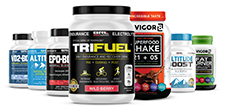Anaerobic Cycling For Time Trial Gains

A lot of cyclists have difficulty going anaerobic. Some find they can do it on an uphill gradient, others in a strong headwind — but on flat ground in decent weather conditions, a lot of people just can’t seem to do it. Then they get into a race setting and they realize that it is possible to go anaerobic; it just takes a hard, sustained effort.
"Going anaerobic" simply means going into oxygen debt. When you go anaerobic, you begin to produce lactic acid and your breathing greatly accelerates. This is easy to achieve in running: All you have to do is sprint for a few hundred meters and you’ll undoubtedly go anaerobic.
Some people have difficulty exerting themselves to this point on two wheels. But if you want to reach your maximum potential, going anaerobic is the way to do it!
The first method, which most people prefer, is to push a more difficult gear than normal. This will take some practice because a lot of cyclists have trouble generating enough power to turn the pedals at an adequate cadence while still maintaining proper form. The effect is comparable to riding uphill or into a strong headwind. Choose a gear that will keep you in the 60-70 RPM range.
Another point to keep in mind is to be conscious of the balls of your feet. Envisioning yourself pushing through the pedal and into the ground will ensure you’re using the proper muscle.
The other common method of going aerobic is pushing a small gear at a high cadence, akin to the technique used in spin classes. Lance Armstrong, one of the greatest cyclists of all time, was known for holding high cadences of 110-120 RPM, whereas in a spin session you’ll see some people hitting 150 RPM.
You don’t want to go that high; if you’re going much over 120 RPM, shift to a higher gear. For most people, a high cadence on the road will be in the 100-110 range. The key here is going lactic: You want to be nearly out of breath and feeling a burning sensation in your legs.
Whichever workout you choose, it will take a lot of effort. Many people tend to think of cycling as more of a low-intensity exercise and rarely exert themselves to a point where they’re significantly winded.
For these kinds of workouts your goal should be to get your heart rate up, run out of breath and go lactic. You can do it ... you just have to want it. If you do this sort of workout session twice a week, within a matter of weeks you’ll significantly improve your time trial times due to an increased lactic threshold.
Take the next step in your training regimen: Try any BRL Sports supplement risk-free! If our natural nutritional products aren’t the best you’ve ever used, simply return your purchase for a 100% refund — no questions asked!
Also in Inspiration & Perspiration

High Altitude Supplements: Complete Guide to Training & Prevention (Altitude Sickness Solutions)
Support endurance and reduce altitude stress with supplements that improve oxygen efficiency, stamina, and recovery in high-altitude conditions.

Best Supplements For Runners: Complete Guide By Training Phase (Base, Peak, Taper & Race Day)
Discover the best supplements for runners by training phase—base, peak, taper, and race day—to boost endurance, recovery, and performance.

Creatine for Endurance vs. Sprint Efforts
Creatine isn’t just for power—learn how it boosts sprint speed, recovery, and endurance performance.


